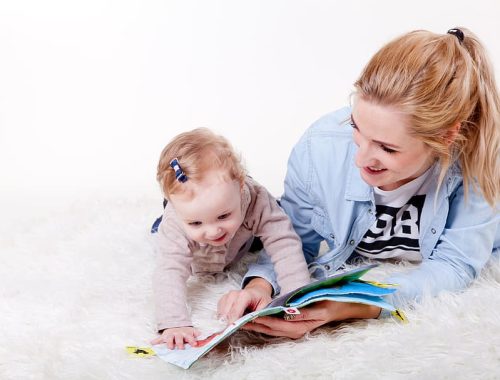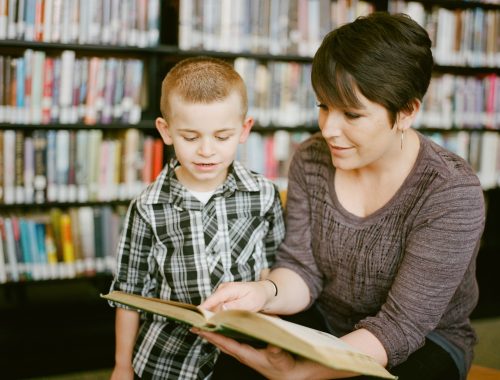
Nurturing Relationships: Exploring the Most Common Positive Parenting Techniques
Positive parenting techniques are widely regarded as effective approaches to nurturing healthy relationships with children. By focusing on empathy, communication, and respect, parents can foster their child’s emotional well-being and overall development. In this blog, we will delve into the most common positive parenting techniques, understanding their benefits and exploring practical ways to implement them in everyday parenting.
Building Strong Emotional Connections
Building strong emotional connections with children is at the core of positive parenting. This technique emphasizes the importance of creating a nurturing and secure environment where children feel loved, valued, and supported. By actively listening, showing empathy, and validating their emotions, parents can strengthen the emotional bond with their children.
Encouraging Open Communication
Open communication is key to fostering trust and understanding between parents and children. Positive parenting techniques encourage parents to create an environment where children feel comfortable expressing themselves. This involves active listening, providing undivided attention, and engaging in meaningful conversations. By encouraging open communication, parents can better understand their child’s needs, perspectives, and concerns.
Setting Clear Boundaries and Expectations
Setting clear boundaries and expectations is an essential aspect of positive parenting. It involves establishing age-appropriate rules, explaining them to children, and consistently enforcing them. By setting clear boundaries, parents provide structure and guidance, helping children develop self-discipline, responsibility, and a sense of security.
Using Positive Reinforcement
Positive reinforcement is a powerful technique that focuses on acknowledging and praising desired behaviors in children. By offering specific and sincere praise, parents can encourage positive actions and reinforce good habits. This technique helps build a child’s self-esteem, motivation, and a positive sense of self.
Modeling and Teaching Empathy
Empathy plays a vital role in positive parenting techniques. Parents can model and teach empathy by demonstrating understanding and compassion towards their child’s emotions and experiences. By empathizing with their child’s feelings and perspectives, parents foster empathy in their children, helping them develop strong interpersonal skills and fostering healthy relationships.
Problem-Solving and Conflict Resolution
Teaching children problem-solving and conflict resolution skills is another key aspect of positive parenting. This technique involves guiding children to identify and understand problems, brainstorming solutions, and encouraging them to think critically. By nurturing their problem-solving abilities, parents empower children to resolve conflicts constructively and make informed decisions.
Time-In Instead of Time-Out
Positive parenting techniques often advocate for using “time-in” instead of traditional “time-out” as a discipline strategy. Time-in involves creating a calm and supportive environment for children when they are struggling with their emotions or behaviors. It encourages parents to stay connected and offer guidance and reassurance, rather than isolating the child as a form of punishment.
Practicing Mindful Parenting
Mindful parenting emphasizes being fully present and engaged with your child in the present moment. This technique encourages parents to cultivate self-awareness, manage their own emotions, and respond to their child’s needs thoughtfully. By practicing mindful parenting, parents can improve the quality of their interactions, reduce stress, and foster a positive atmosphere at home.
Allowing Independence and Autonomy
Positive parenting techniques emphasize the importance of allowing children to develop independence and autonomy within safe boundaries. This involves giving age-appropriate responsibilities, encouraging decision-making, and supporting their exploration and learning. By nurturing independence, parents help children develop self-confidence, resilience, and a sense of personal agency.
Practicing Self-Care as a Parent
Self-care is a fundamental component of positive parenting. Taking care of one’s physical, emotional, and mental well-being allows parents to show up fully for their children. Prioritizing self-care activities, seeking support from others, and practicing self-compassion enables parents to sustain their energy and provide the positive presence their children need.
Positive parenting techniques focus on nurturing strong relationships, open communication, and respectful interactions with children. By implementing these techniques, parents can create an environment where children thrive emotionally, develop essential life skills, and build healthy relationships. Incorporating these strategies into daily parenting routines can transform the parent-child dynamic, fostering a positive and loving environment for the entire family.

A Parent's Guide to Scarlet Fever
You May Also Like

How Do Babysitters Handle Child Care
2023-11-19
Top 5 Things You Should Teach Your Children
2022-12-16
